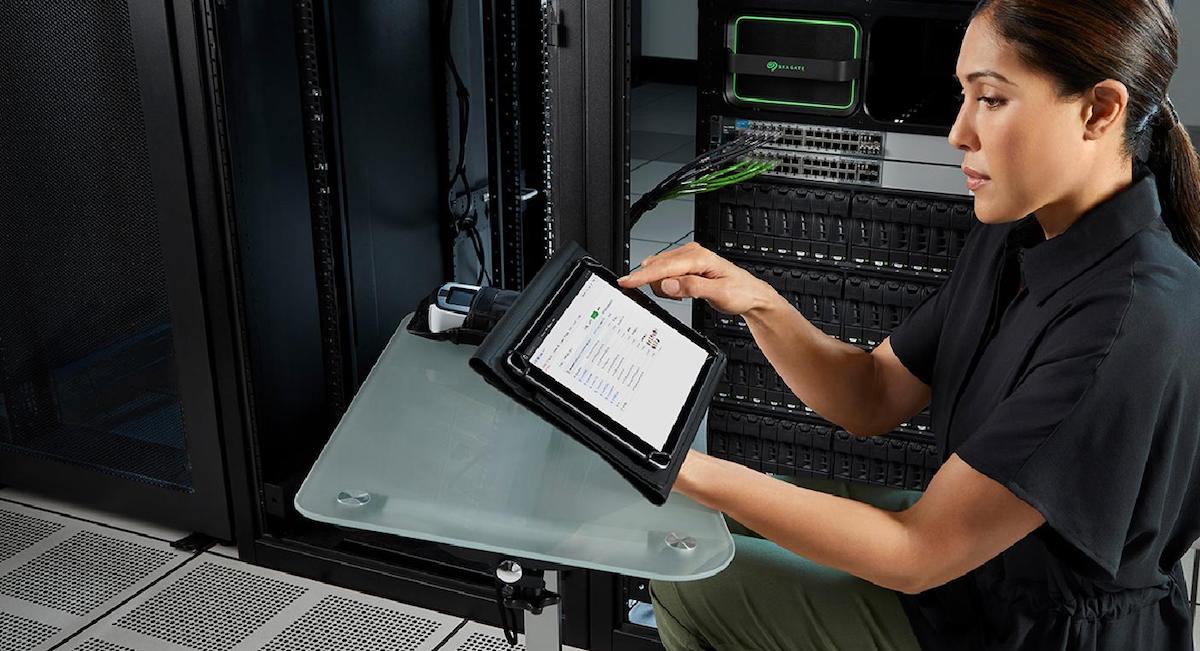How will you put data to use for your small business?
Tech trends and the rise of data everywhere can represent both an advantage and a sore spot for small businesses.
On the one hand, innovations in technology and how we use data can present a golden opportunity for smaller firms, many of which are more nimble than larger companies with set business processes. This can give small firms an advantage, because they can quickly adopt and adapt as new opportunities emerge from tech innovation.
At the same time, though, a small business often is resource-scarce, most notably in terms of finding time to spend on integrating new technology and making the most of the datasphere. For many smaller firms, just keeping up with the latest data trends is a challenge, let alone taking advantage of them.
While we can’t help with adoption, we can ease the pain of keeping up with the latest trends in the use of data. Here are five small business data technology trends for 2018 that may be worth adopting.
1. Data Analytics for Everyone
Businesses have never had better access to data. From web tracking and IoT devices that show customer usage and behavior patterns, to big data analytics that enable new insights, businesses have a lot more hard data to work from when developing products or strategies, and keeping customers happy.
While big data and analytics packages have been around for awhile as a means to leverage this data, smaller businesses have sometimes been left in the cold.
But that’s changing. With the rise of artificial intelligence and services such as Cien’s AI-driven customer sentiment software, small businesses can now also get in on data analytics and making the most of this data.
If you’re new to big data use, check out our blog post on big data for small businesses.
2. Omnichannel Customer Interaction
Businesses already know that their customer communications and data gathering must be multichannel in 2018. From Facebook and Twitter to email, chat and text message support, small businesses must play where customers are interacting.
But multichannel is not enough. The new trend is omnichannel customer interaction.
Omnichannel goes beyond just having multiple communication channels with a customer to integrating those channels into a single business voice. Omnichannel interactions mimic what we all do every day when we communicate with friends and family across several different mediums. The mediums change, but we stay the same — so our different communication platforms don’t create a disconnect.
Small businesses need the same.
Salesforce’s Desk.com is one way small businesses can turn multichannel into omnichannel; the platform has strong automation elements, and brings together the many different support channels into a single, coherent whole.
“Using support automation to address customer issues results in faster resolution of the issue, costs less and is often more targeted than support provided by an agent,” says Desk.com’s Tiago Paiva. “Knowing this, startups and SMBs have been increasingly leveraging support automation to better meet the needs of their customers and decrease the workload burden on their support team.”
3. Location-Independent Collaboration
The office is so 2010. Today’s workers are often out in the field, working from home offices, or moving around between different locations. This is especially the case with small businesses, where contractors and a distributed workforce is fast becoming the norm.
Having this distributed workforce can present collaboration challenges, however, so a recent small business technology trend has been adoption of online collaboration platforms that stitch together workers no matter their location.
These services provide video conferencing, unified communications, data and document sharing, and digital brainstorming features, among others.
One solution that’s getting quite popular is collaborative project management platform, Asana. It helps small businesses create a single platform for communication and workflow, keeping all documents safe yet shareable through integration with Google Drive, Dropbox and Box.
4. Reputation Management
It is a cruel truth, but a handful of unhappy customers can torpedo small businesses in 2018 — sometimes despite a company’s best efforts to resolve customers’ needs, and sometimes even for reasons unrelated to an actual product or service problem. A few raging forum posts or a few exaggerating tweets can seriously skew the overall data profile for a young business, and hurt an up-and-coming brand.
That’s why it’s worth becoming familiar with a fourth trend, online reputation management.
Reputation management services such as Reputation X can help clean up, if members of the public have unfairly trashed a brand online.
Services such as Reputation X work by spotting and addressing trolls and unmerited hater posts targeting a small business, which can improve search results and enable businesses to manage their reputation on review sites like Yelp. This can be a big help, especially for resource-strapped small businesses that are too busy working to create a new product or service they believe will truly help their customers, and can ill afford a reputation problem online.
5. Interactive Live Content
Customers are swimming in a sea of content in 2018. Not only is it hard for small businesses to keep up with content creation duties, but it’s an additional challenge to offer info and media that’s compelling enough to attract the attention of buyers in this swirl of marketing material.
Smart businesses are recognizing an opportunity for differentiation, and for simpler content creation, though live streaming. Live streaming creates interest by serving as a limited-time event. At the same time, companies can use these live events to generate content without having to put in as much traditional production work (although solid pre-planning is critical), because users create much of the content experience with live events.
Cloud-based platforms like Agora.io help small business use real-time voice and video communications for such live events. The highly scalable platform allows small businesses to easily set up interactive broadcasting sessions with up to 50,000 participants.
“By empowering the audience member to do more than simply consume video, audience engagement — specifically: interaction between the audience members and the original content creator — opens new revenue streams,” according to a blog post by the company.
So there you have it: five of the biggest tech trends for small businesses going forward in 2018. Now it’s your turn to take these ideas on how to use data, and put them to good use in your business.







